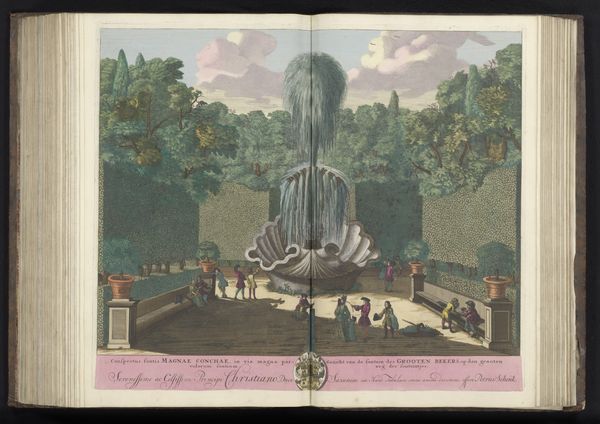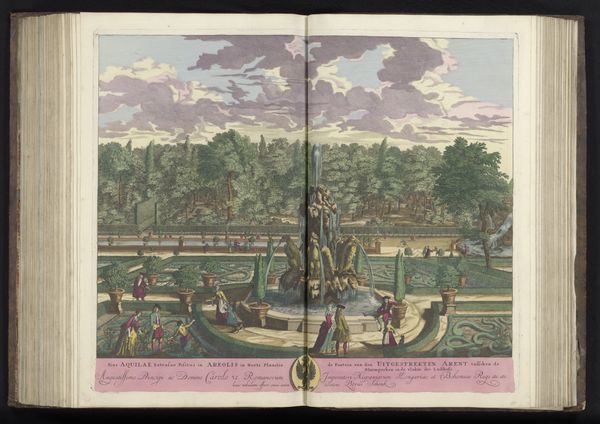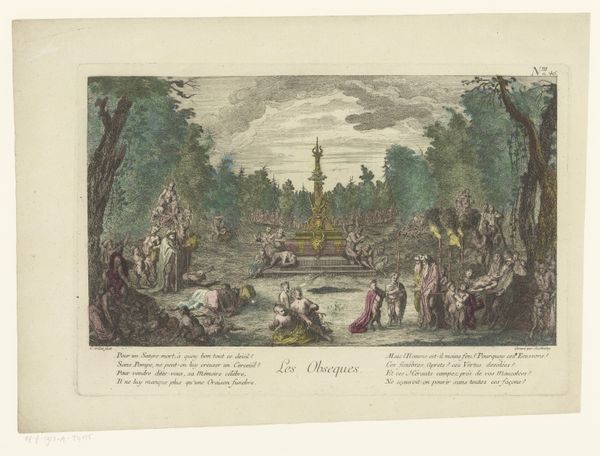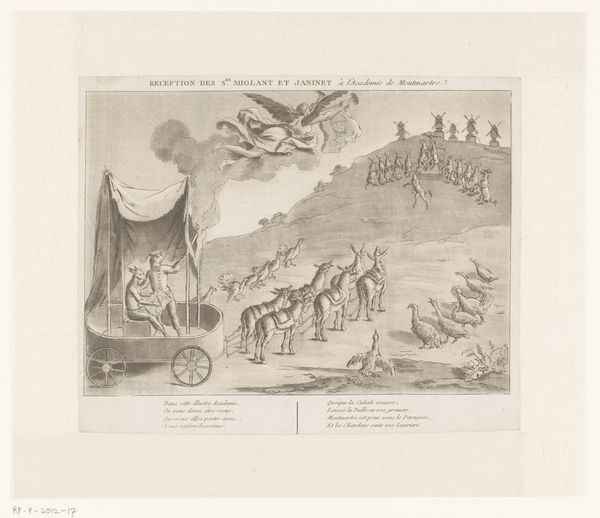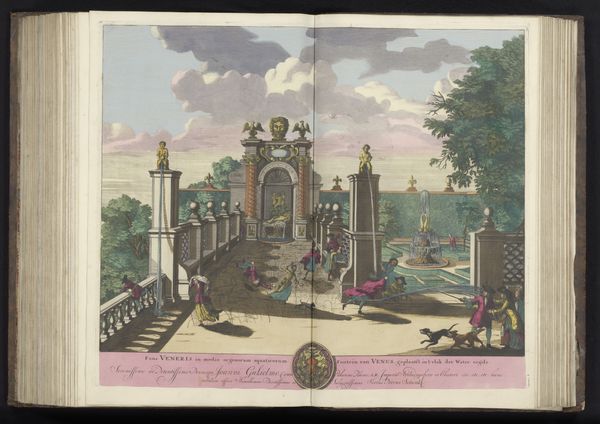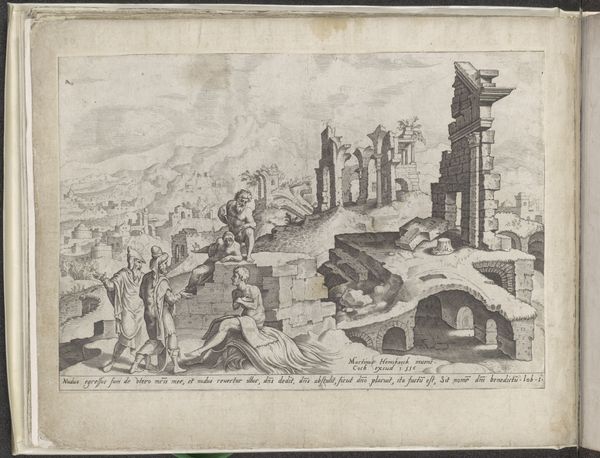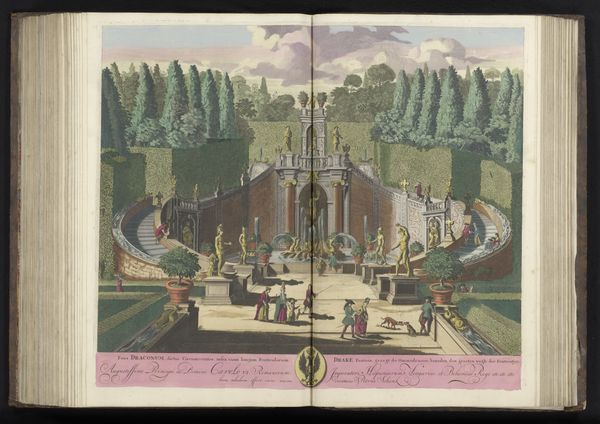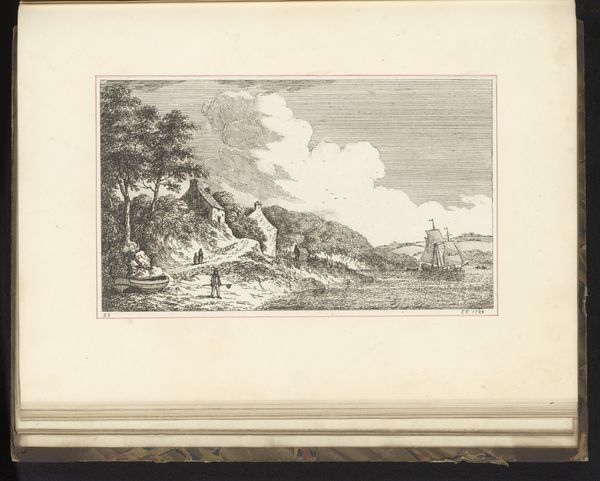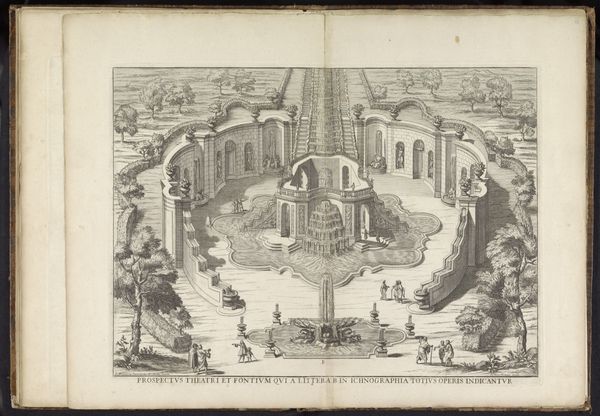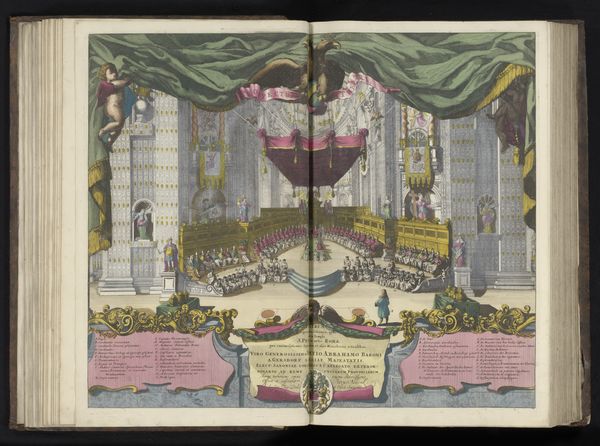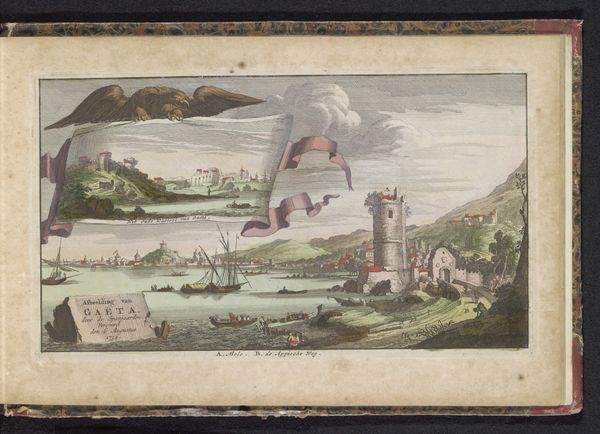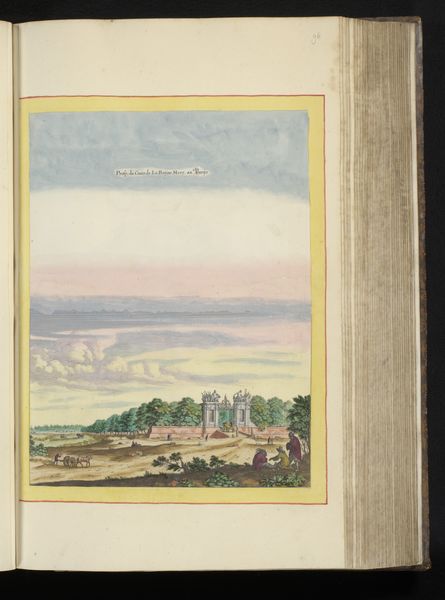
Fontein van de Klippen in de tuin van de Villa d'Este te Tivoli Possibly 1670 - 1717
0:00
0:00
graphic-art, print, etching, engraving
#
graphic-art
#
garden
#
baroque
# print
#
etching
#
landscape
#
perspective
#
coloured pencil
#
cityscape
#
engraving
Dimensions: height 488 mm, width 590 mm
Copyright: Rijks Museum: Open Domain
Editor: Here we have Pieter Schenk’s print, "Fountain of the Cliffs in the Garden of the Villa d’Este in Tivoli," likely created sometime between 1670 and 1717. It's a landscape in etching and engraving with a distinctly Baroque flavor. The two massive fountains on either side really dominate the composition and almost have this anthropomorphic feel to them. What do you see in this piece, particularly in terms of symbolism? Curator: These fountains, rising like craggy mountains topped with plumes of water, speak volumes. Water itself is a powerful symbol – of cleansing, renewal, and even the unconscious. Here, it’s forced upwards, almost violently, which to me suggests a taming of nature, a very Baroque sensibility. Consider, too, the "artificial" grotto-like structures beneath the water jets: built to resemble something natural, but fundamentally shaped by human will. Do you see any classical allusions within the setting? Editor: I suppose the formal garden layout suggests a connection to classical ideals of order and reason imposed on nature. Is there also a commentary on power and wealth evident? Curator: Absolutely. The Villa d'Este itself was a statement of Cardinal Ippolito II d'Este's influence. Gardens like this were not merely places of leisure, but carefully constructed landscapes meant to impress. The waterworks alone would have been an astonishing feat of engineering, broadcasting wealth and control. How do you think contemporary audiences might have interpreted the contrast between nature and artifice, visible in the fountain design? Editor: I hadn’t really considered the social implications embedded in the imagery before. I focused on the technical skill of rendering such detail in a print. It does makes me reflect on what it represents in its time. Curator: Indeed. Thinking about these visual symbols across time provides rich insight into the long endurance and manipulation of images. A single etching opens up dialogues across centuries.
Comments
No comments
Be the first to comment and join the conversation on the ultimate creative platform.
